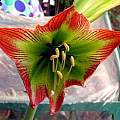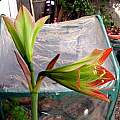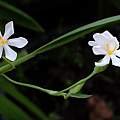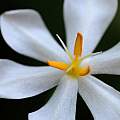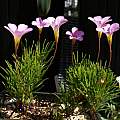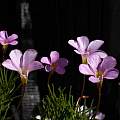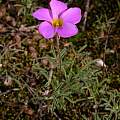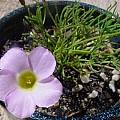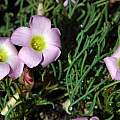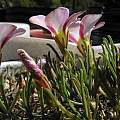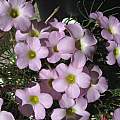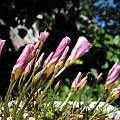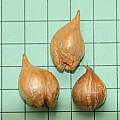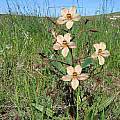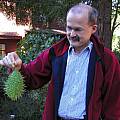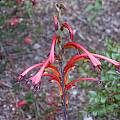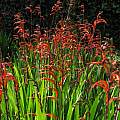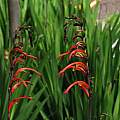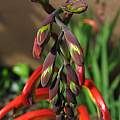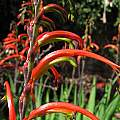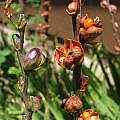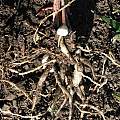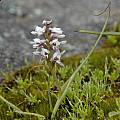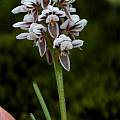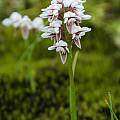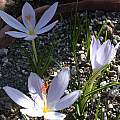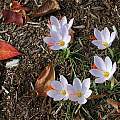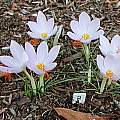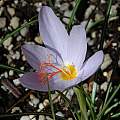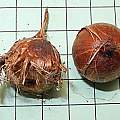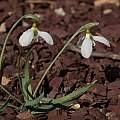This page is a random selection of wiki entries which is updated daily.You can subscribe to it as an RSS feed  The RSS feed contains 'media' data and can be used as a 'photo feed' by programs such as screen savers, slide shows and picture frames.Click to add Bulb Day to your MyYahoo page
The RSS feed contains 'media' data and can be used as a 'photo feed' by programs such as screen savers, slide shows and picture frames.Click to add Bulb Day to your MyYahoo page 
From Neobolusia on Saturday 13th of December 2025 04:04:19 PM PST
Neobolusia tysonii (Bolus) Schltr. grows in moist or marshy grassland from 1200 to 2350 m. It is often found in colonies, but sometimes is hidden in the grass. This species blooms in summer. Flowers are bronze to brownish green with white petals and a snow white lip that often has a pink central band or blotch. Height: 40 cm. Photo taken by Cameron McMaster at Satansnek Pass January 2010.
From Hippeastrum Species One on Friday 12th of December 2025 05:10:12 PM PST
Hippeastrum correiense (Bury) Worsley is native to Brazil. Lee Poulsen wrote: "I got this from a large Japanese bulb company (Komoriya), and was told it was Hippeastrum coliense. I can't find a picture of it on the web anywhere, and when it bloomed, at first I didn't think it looked like the picture in the catalog. But then I realized that the front-on view looked the same and I just didn't know it had such a long trumpet and that this is as wide as it opens. The scape is about 2/3 of a meter tall." Photo taken March 2004 by Lee Poulsen.
From Eleutherine on Thursday 11th of December 2025 04:30:21 PM PST
Eleutherine bulbosa Miller (syn E. americana, E. anomala, E. longifolia, E. palmifolia, E. plicata, E. subaphylla). The typical flowers are formed on several rhipidia with secondary branching, open in the evening for about three hours and have no notable scent. Most plants in cultivation and all from Asia are sterile, while most fertile plants were found in Peru. If they set seed, the capsules are globose. Height range: 1-2 ft. Photos by Martin Bohnet of plants obtained from Thailand.
From South African Oxalis Eight on Wednesday 10th of December 2025 04:19:19 PM PST
Oxalis polyphylla Jacq. is a winter-growing species usually found on flats, light or heavy soils in the southern Cape (Malmesbury to Port Elizabeth). Growing to 20 cm with a bulb that is often gummy, it has rose, lilac or white flowers with a yellow tube and often darker margins, linear leaflets folded lengthwise and flowers March to June. The first two photos below were taken by Nhu Nguyen of plants from Telos Rare Bulbs. The last photo from the CD of the book Plants of the Klein Karoo courtesy of Jan and Anne Lise Schutte-Vlok.
Oxalis polyphylla var. heptaphylla is a winter growing, fall blooming South African species. Photo 1 was taken by Lyn Edwards. Photos 2-3 from Mary Sue Ittner and Bob Rutemoeller are offsets from plants originally collected by Michael Vassar as MV6396 at Vanrhynsdorp, Northern Cape, South Africa. It was described as: succulent thread-like leaves with up to 8 leaflets to a stem; corms often gummy; large satiny-lavender flowers. Photos 4-5 from Nhu Nguyen of the same clone, show a nice mass blooming in pot and the back of the petals when closed. The last photo shown from Mary Sue Ittner is of the bulbs on a 1 cm grid.
From Wachendorfia on Tuesday 9th of December 2025 04:59:19 PM PST
Wachendorfia brachyandra W.F.Barker is a short species with apricot yellow flowers found in sandy places between the Cape Peninsula and Saldanha in the winter rainfall area of South Africa. Height range: 20-65 cm. It differs from Wachendorfia paniculata, another short species, by having clustered stamens and style half as long as the tepals and flowers that wither shortly before midday. Photographed at Tienie Versveld reserve on August 24 2004 by John Grimshaw.
From Marah on Monday 8th of December 2025 05:44:49 PM PST
Marah macrocarpa (Greene) Greene is found on dry slopes from Santa Barbara, California south to Baja. The male flowers look like flat stars and the fruit is oblong and densely spiny. Previously known as Marah macrocarpus, this note in the Jepson Interchange for California Floristics explains the name change: "Correspondence 1 indicates that Marah is properly treated as feminine. [Therefore, spelling of epithet corrected to Marah macrocarpa (Greene) Greene, from Marah macrocarpus (Greene) Greene previously in this Index, 15 Feb 2011.]" Height range: 15-20 ft. Johannes-Ulrich Urban holds a fruit he found in southern California. Photo by Bob Rutemoeller.
From Chasmanthe on Sunday 7th of December 2025 04:02:32 PM PST
Chasmanthe bicolor (Gasp.) N.E.Br. is endemic to the Western Cape. It has an erect spike with orange scarlet flowers with lower lateral green tepals and a yellow tube. Flowers face to two sides. It grows to 28-36 inches (70-90 cm) and blooms midwinter to early spring. Photos 1-2 by Mary Sue Ittner. Photos 3-6 were taken by Nhu Nguyen.
The photos below by Nhu Nguyen shows the pods and very pretty shiny orange seeds and the fleshy roots below the new corms during the growing season. Notice the seed capsules are straw colored on the inside.
From Chiloterus on Saturday 6th of December 2025 05:23:47 PM PST
Chiloterus cucullatus syn. Prasophyllum cucullatum or the Hooded Leek Orchid is found on rocky or sandy soils in southwestern Western Australia. This species is smaller than Prasophyllum gibbosum with a spike of small white and brown sweetly scented flowers 0.05–0.2 m high. The lateral sepals form a hood in front of the lip. Photos taken September 2007 adjacent to a rock outcrop in southwestern Western Australia by Bob Rutemoeller and Mary Sue Ittner. We think this is this species.
From Fall Blooming Crocus Three on Friday 5th of December 2025 05:59:29 PM PST
Crocus tournefortii J.Gay from southern Greece and the Greek Islands is a species that is unusual in that the flowers remain open at night and in bad weather; thus, it is best grown under glass in less mild climates, although it is cold-hardy to at least 25 degrees F. It flowers after the leaves have emerged. Height: 10 cm. The first photo was taken by Jane McGary. Two additional photos by Mark McDonough showing aspects of this, perhaps the most beautiful, of all autumn crocus. I can attest that it is much hardier than Jane indicates, as mine are planted outdoors and never fail to bloom October - November each year, easily surviving winter temperatures well below 0 °F. The flowers too, are weather resilient, surviving freezing temperatures in the mid 20s Fahrenheit. The exquisite flowers are lightly fragrant. The last two photo were taken by Mary Sue Ittner. The last shows corms on a 1 cm grid.
From Galanthus on Thursday 4th of December 2025 04:02:55 PM PST
Galanthus gracilis Čelak. is distributed from Bulgaria to southwestern Ukraine, western Turkey, and the Aegean Islands, where it grows at elevations from 100 m to 2000 m. It is found in a wide variety of habitats: mixed woodland, short grass, scrub, between rocks and on or at the base of cliffs, and next to rivers and streams, often in deep fertile soils at a depth of 10 to 20 cm. It is similar to Galanathus elwesii and has narrow, upright leaves, which are frequently twisted on the vertical axis giving the leaves a corkscrew-like appearance. Height range: 5-10 cm. Photo from John Lonsdale.

